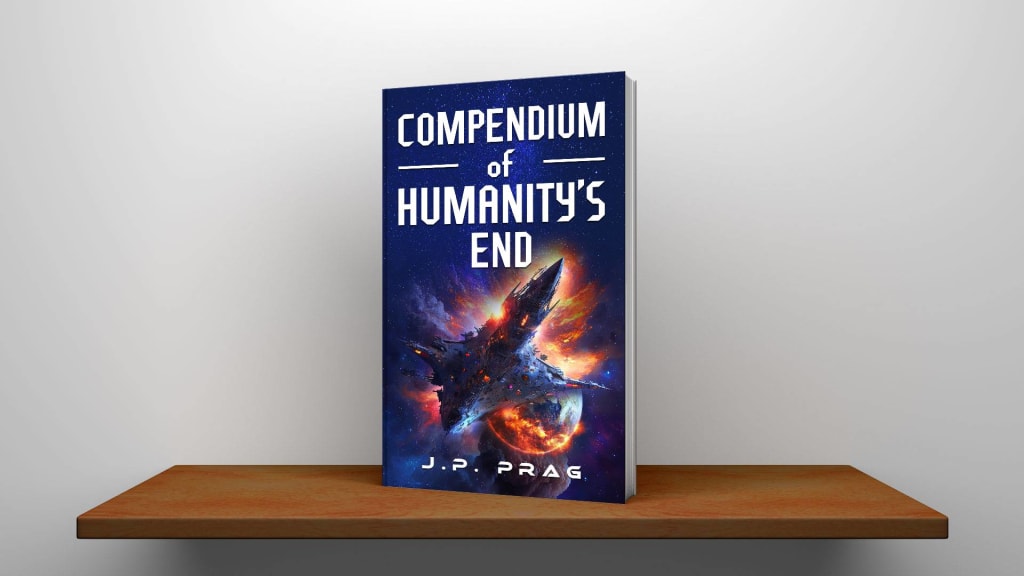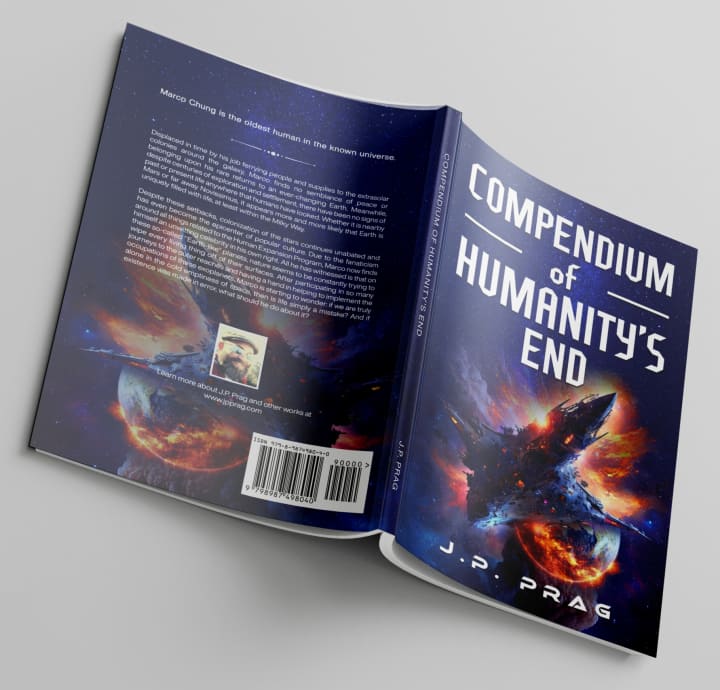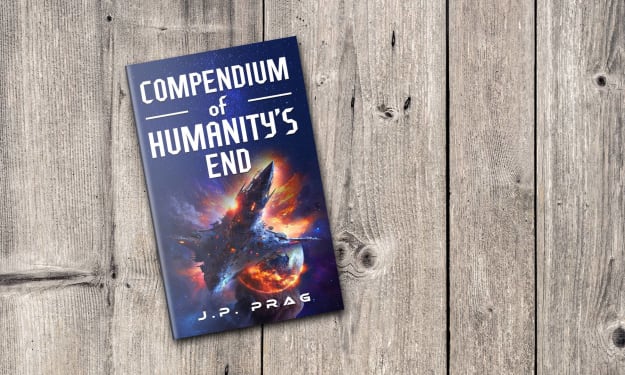Record #03: Distance // Compendium of Humanity's End
Excerpt from the Book 'Life x Universe'

You are mostly empty space.
Oh, you may feel like you are a semi-solid, if not squishy object, but that could not be further from the truth. If you start to zoom in, you’ll see that you are made of trillions of tiny cells. But those cells are just gooey packages for various tiny organelles and even your DNA. DNA, though, is made up of long, complex sugars. Those sugars themselves actually consist of just five elements—hydrogen, carbon, oxygen, nitrogen, and phosphorous—in various configurations.
Yet when we peer into any of those elements, we will find a nucleus filled with protons and neutrons and then electrons floating out far away from the center. The distance between the nucleus and the electrons is vast. For instance, with that hydrogen atom, if the nucleus were our home-system’s sun Sol, the electron orbiting it would have a range of distances as far out as half a light-year and as close as six times the orbit of dwarf binary planetoid Pluto-Charon.
In other words, there is almost nothing there. What we perceive as the feeling of something being solid is just a magnetic repulsion as electrons and protons push away from their brethren (opposites attract, likes repel).
But amazingly, we can go even deeper. Inside those protons and neutrons are quarks, arriving in sets of three to determine what they combine into being at the nanoscopic level. The quarks, the electrons, and a set of similarly situated components—including their “opposites”—are what we call “fundamental” or “elementary” particles. You don’t need to know what they are, though, just that they exist, and that even when grouped together inside something like a single proton, the distances between them are immense.
As far as we can tell there is nothing smaller that these particles. However, they are not exactly particles, either. Quantum mechanics tells us that they act as waves, too, and only really take on the properties of particles when we observe them directly. In other words, when we aren’t looking, these particles do not really have properties at all. And the core property we need to consider is location.
In the “Quantum Realm”—as popular fiction likes to call it—everything is probability, not definitiveness. That electron may be six Pluto-Charon distances away, it may be half a light-year, and it may be anywhere in between. Until we observe it, it is actually in all those places at once. When we take a peek, it picks a spot and hangs out until we look away again.
The thing is, that electron has most of its probability of being exactly where we expect it to be. When we look at it, the wave “collapses”, which in turn causes it to be somewhere specific. Until that moment, it was everywhere, and then it wasn’t, and then it was again. This is what we used to think of as its “superposition”.
With teensy, tiny particles, this isn’t such a big deal because there are no noticeable impacts on the macro level, that plane being the size of life we deal with. You and I, although mostly empty space, are still very big. If we scale up all those probabilities to our size, we have more than a 99.¯("9" )% chance of being exactly where we are. We cannot just collapse an entire person to be somewhere else just by looking at them differently like we can a quantum particle.
Or can we?
Well, not really. But what if you could keep track of every fundamental particle that makes us up as well as anything in our immediate vicinity so that we can collapse those somewhere else? Wouldn’t we, by that very definition, go along for the ride? And by “you”, I mean a supermassive quantum computer capable of keeping track of a nearly infinite number of objects all at once and deciding that they should collapse somewhere else far, far away.
Early on, scientists tried to figure out just how “big” the quantum range where a particle might be found truly is. By the orthodoxy, that electron had a span of possibilities where it could be pinpointed—whether on the extreme ends of that distance or anywhere in between, though never “too far” away. It all made perfect, logical sense. Quantum physics, however, does not care if it makes sense inside our hominid brains. The revolution came when we realized that there actually are no limits, that likelihood extends out to perpetuity, just with ever infinitesimally tinier odds. The probability of the wave collapsing outside of the near local range is almost nothing, but it is still not zero!
And that, in a nutshell, is how faster than light travel is possible. Even making one single quark do this takes unfathomable amounts of resources and calculations, yet this is exactly what we have been able to harness with the Quantum Drive, a type of spaceship engine that takes itself and anything in it (and really, most things around it) on a sudden “shift” from one location to another, even thousands of light-years away.
But is it truly working? How do we know that everything has been accounted for? One man named Marco Chung has participated in more Quantum Shifts from one place to another than any other human in history. When I asked him what the experience of partaking in a Quantum Shift was like, he told me, “It always feels like something is missing afterwards, like a part of me was left behind... that I am no longer whole.”

The above piece is an excerpt from the speculative hard science fiction novel Compendium of Humanity's End by J.P. Prag, available at booksellers worldwide.

Learn more about author J.P. Prag at www.jpprag.com.

Compendium of Humanity's End is a work of mixed fiction and nonfiction elements. With the fiction elements, any names, characters, places, events, and incidents that bear any resemblance to reality is purely coincidental. For the nonfiction elements, no names have been changed, no characters invented, no events fabricated except for hypothetical situations.
About the Creator
J.P. Prag
J.P. Prag is the author of "Aestas ¤ The Yellow Balloon", "Compendium of Humanity's End", "254 Days to Impeachment", "Always Divided, Never United", "New & Improved: The United States of America", and more! Learn more at www.jpprag.com.
Enjoyed the story? Support the Creator.
Subscribe for free to receive all their stories in your feed. You could also pledge your support or give them a one-off tip, letting them know you appreciate their work.






Comments
There are no comments for this story
Be the first to respond and start the conversation.